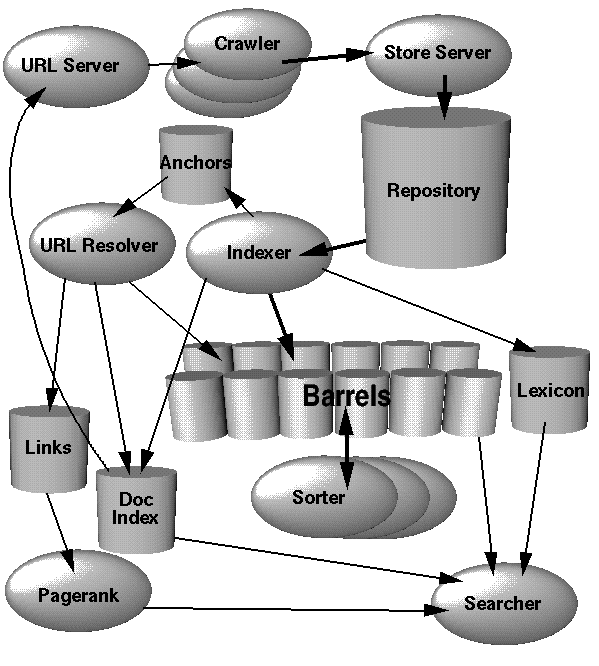Optimizing web pages for high rankings in the search engines involved two main processes. Firstly there is the on-page factors which include what keywords you place where on the page itself. The second, and more important process is getting the off-page factors right - incoming links.
This article explores mainly the on-page factors. As the competition for a keyword phrase increases, off-page factors become more important to good rankings and these often mask the effects of on-page factors making it impossible to see what on-page factors are important. For this reason, I am going to look at a high ranking page with low levels of competition in Google.
First, let's consider what we mean by competition.
There are two ways to look at competition in Google. There is the competition a page has when you type the phrase with quotes, and the competition when you type the words without quotes. The number of results returned by Google in each case is YOUR competition.
The main differences between these two types of search are as follows:
Search with Quotes - this returns only those pages that have been "optimized" for the exact phrase.
Search without Quotes - this returns all pages that have been "optimized" for the words making up the phrase.
e.g. (in simple terms)
a) If you search Google for
alsatian dog
Google returns 41,000 competing pages.
b) If you search Google for
"alsatian dog"
Google returns 6,390 competing pages.
In (a) above, there are 41,000 pages that refer to alsatian AND dog, but not necessarily to alsatian dog.
In (b) above, there are 6,390 pages that refer to the exact phrase alsatian dog.
Now, if you want to rank well for the term "alsatian dog" on Google, you only have to compete with 6,390 other pages for this exact term.
However, there are 41,000 - 6,390 = 34,610 other pages that are related to this search, and might still beat you if Google sees them as more relevant than your page.
We have discussed before the importance of link reputation and PR in ranking. It is possible for a high PR page to rank well for a term like alsatian dog, even if it does not have the exact phrase on the page.
This fact clouds the issue somewhat, and so although I recommend searching with quotes to find the real competition, I also recommend that you look at the top few results in Google (as searched without quotes) to determine how important those "partial match" pages are.
A quick search at:
http://www.prsearch.net/
for alsatian dog, shows me that the top pages for this search without quotes have a low PR (0-3) and many of those pages have 0 incoming links.
The same search at PRSearch.net using quotes around the phrase show very similar results. The competing pages for the exact term have low PR and low incoming links.
This phrase should be easy to target and get top rankings if done properly.
A word of warning: Because the PR reported on the Google toolbar is out of date (see earlier), you cannot be 100% sure of the PR of the pages, even using a site like PRSearch. They will use the same formula that the toolbar uses, and so will be equally out of date. Only Google knows the exact PR it is using in its ranking for any one page.
A second check I often do is to check what the PR of the homepage of the site that is ranking well, as this gives me an indication of how important the site as a whole is. For the phrase alsatian dog (with or without quotes), the top page is:
http://www.castleofspirits.com/stories02/alsatian.html
The homepage
http://www.castleofspirits.com
has a PR of 6 - quite an important site.
However, there is no link to the alsatian page on the homepage, so the PR 6 homepage wont directly help towards the high ranking of the alsatian dog web page.
Doing a backward links check on Google does not help since there are no backlinks listed for this top ranking page.
OK, putting on my detective hat, I see a link at the bottom of the Alsatian page called "March 02 Ghost Stories". There is another link to "Ghost Story Page".
Clicking on the link to Ghost Story Page, I am taken to a PR 5 page:
http://www.castleofspirits.com/storypg.html
where I find a link to March 2002 Ghost Stories. Clicking that link takes me to a PR 3 page:
http://www.castleofspirits.com/stories02/mch2002.html
And on this page I find a link to Ghostly Alsatian dog.
So, the top ranking alsatian dog page has one link I know of from a PR 3 page. I might assume that this site also has a sitemap (although I cannot find one) where it contains a second link to the alsatian dog page. That means a total of 2 links, both internal.
I can assume from this that the alsatian page with a PR 2 is probably the correct PR, and the page itself has very few incoming links. I am confident that if I targeted the phrase alsatian dog, I would easily get a top ranking.
The phrase alsatian dog is therefore an EASY phrase to target.
As a final check I went to the searchguild difficulty tool mentioned in section 6 of this newsletter and typed my phrase into that. The Search Guild rates this term as EASY.
With relatively few off-page factors contributing to the high ranking of this page, I can only assume that the on-page factors are what makes this page stand out from the rest and rank at number 1 on Google.
There are a variety of tools available for calculating density, but I use a tool I wrote for myself and is not available for purchase.
Running this URL through my tool tells me a lot of useful information.
Density of the phrase "alsatian dog" on the page is 0.49%
The keyword is found ONCE in the title (11.11%), and TWICE in the main text on the page (a density of just 0.34%).
The keyword is not found in any header or meta tag!
As a second check I always look at what I call the partial density. That is the sum of the densities of all words that make up the phrase.
e.g. the phrase "alsatian dog" is made up of two words - alsatian AND dog. I look at the density of alsatian, and the density of dog, and combine the two densities.
This is useful because it tells me the density on the page of the words that make up the phrase (remember it is possible to rank well without the exact phrase on the page) - a kind of simplified page reputation.
The partial density of this page is 3.09%, made up of 7 occurrences of alsatian, and 12 occurrences of dog. This page is obviously about alsatians and dogs!
Let's look at the prominence of this phrase on the page. First an explanation of what prominence means.
Prominence is a measure of where on the page a word exists.
A prominence of 100 would mean it was the first word on the page.
A prominence of 1 would indicate it was the last word on the page.
A prominence of 50% would indicate it was the middle word on the page.
If the phrase was the first word (100% prominence) and the last word (1% prominence) on the page, the average prominence on the page would be about 50%. That means the keywords are well spread out on the page. As prominence increases, the keyword is found higher up the page, as it decreases, it is found lower down the page.
For analysis of top ranking pages, I look at not only the average prominence of ALL occurrences of the phrase on my page
i.e. how the keywords are spaced out on the page,
but also the prominence of the first occurrence on the page.
i.e. how close to the start of the document is the phrase first found?
The prominence of the first occurrence of the phrase alsatian dog is 99.67%. That means it is almost the first phrase on the page (only the word ghost comes before it).
The average prominence of the whole page for this term is 62.62%. That means that the keywords are distributed more in the upper portion of the page. Haven't I always told you that it was important to get your main keyword in the top one-third of the page?.
This page is a good one to study. It shows a top ranking page for a low competitive keyword phrase. Because of the low competition, incoming links and PR are less important (though if you have both, you could dominate this phrase), while on-page factors will make or break the ranking.
Even though the exact phrase is only found 3 times on the page, the fact that the phrase is in the title of the document and in the body text seems to be enough. This low density is backed up by using the words that make up the phrase several times on the page. Google will be in no doubt what this page is about.
A final help to the ranking of this page is the filename. Notice that part of the keyword phrase is found in the filename - alsatian.html













![PR[A]=(1 - d) + d\left (\frac{PR[T1]}{C[T1]} + ... + \frac{PR[Tn]}{C[Tn]}\right )](http://upload.wikimedia.org/math/4/b/d/4bd8baa61138331ba280d306f623ba48.png)





